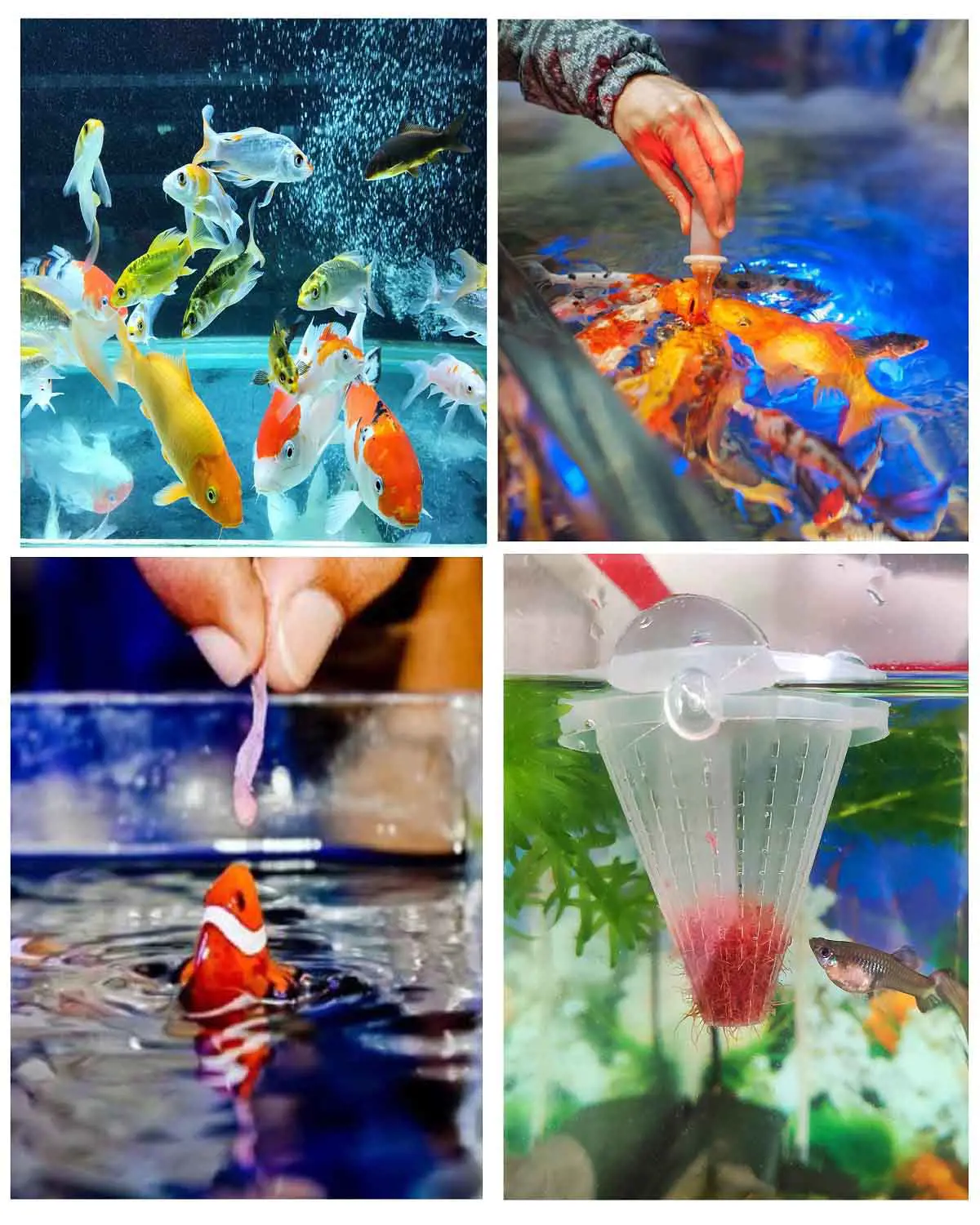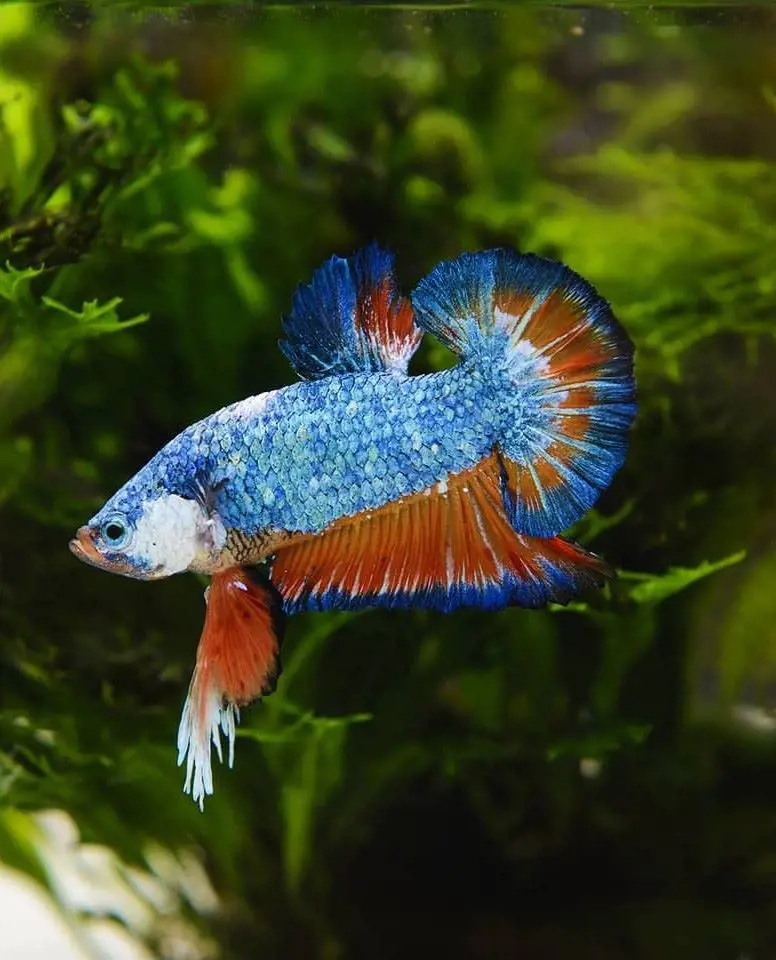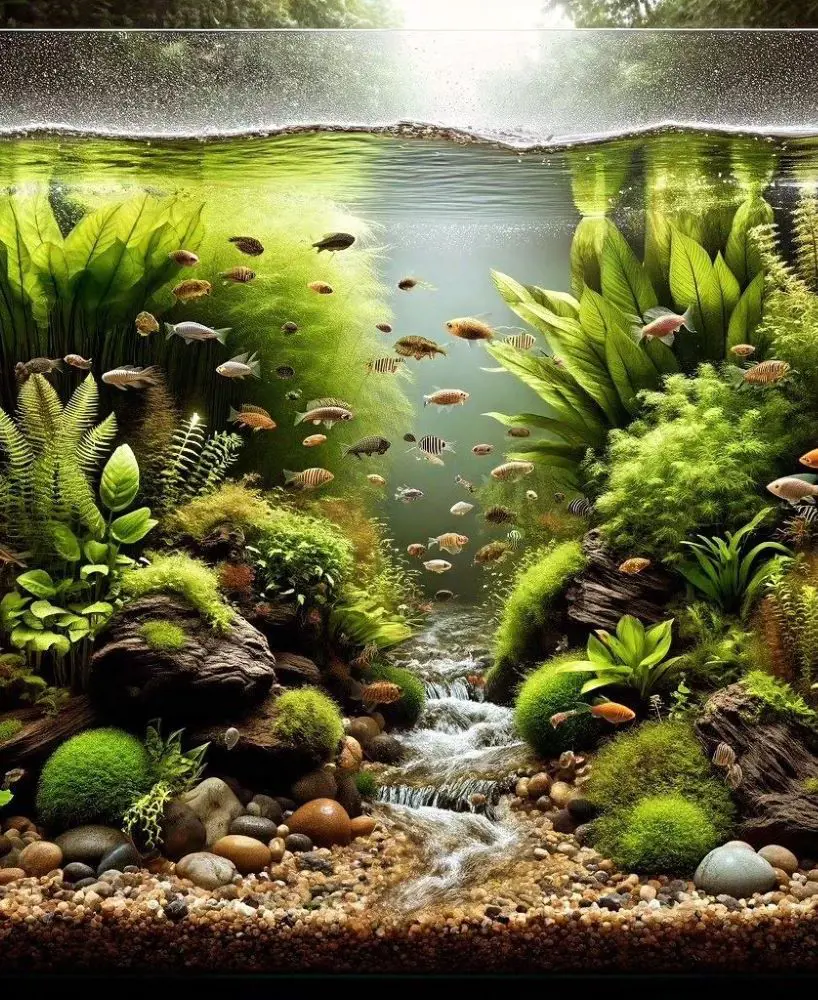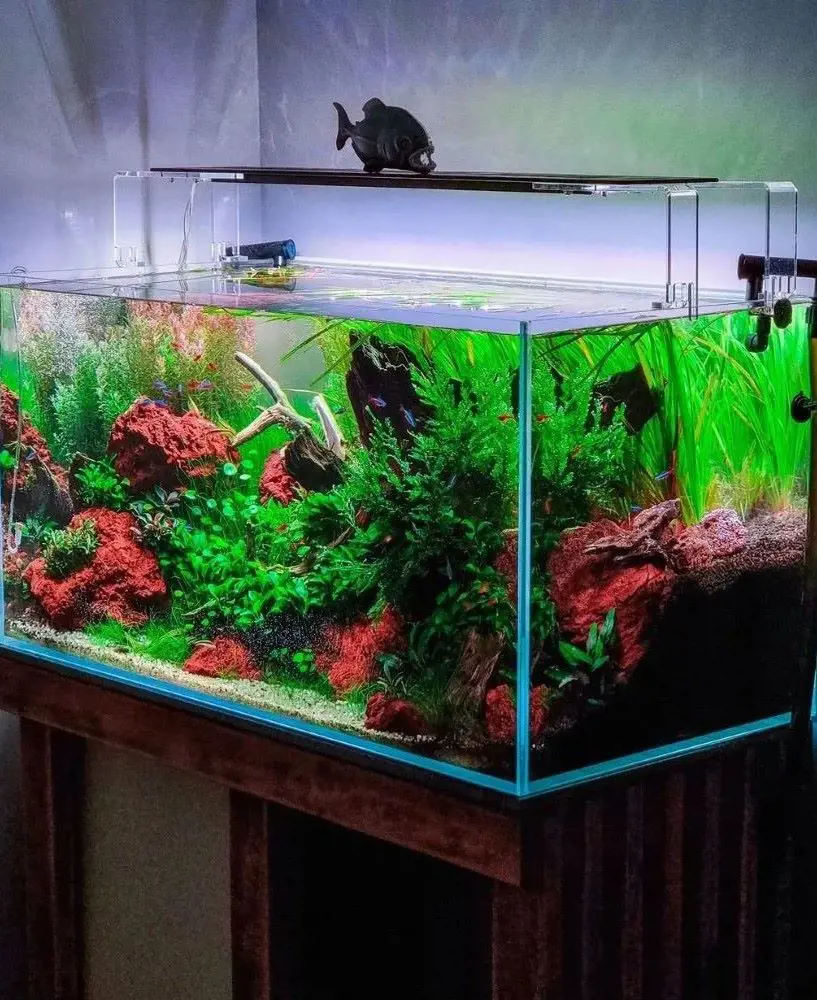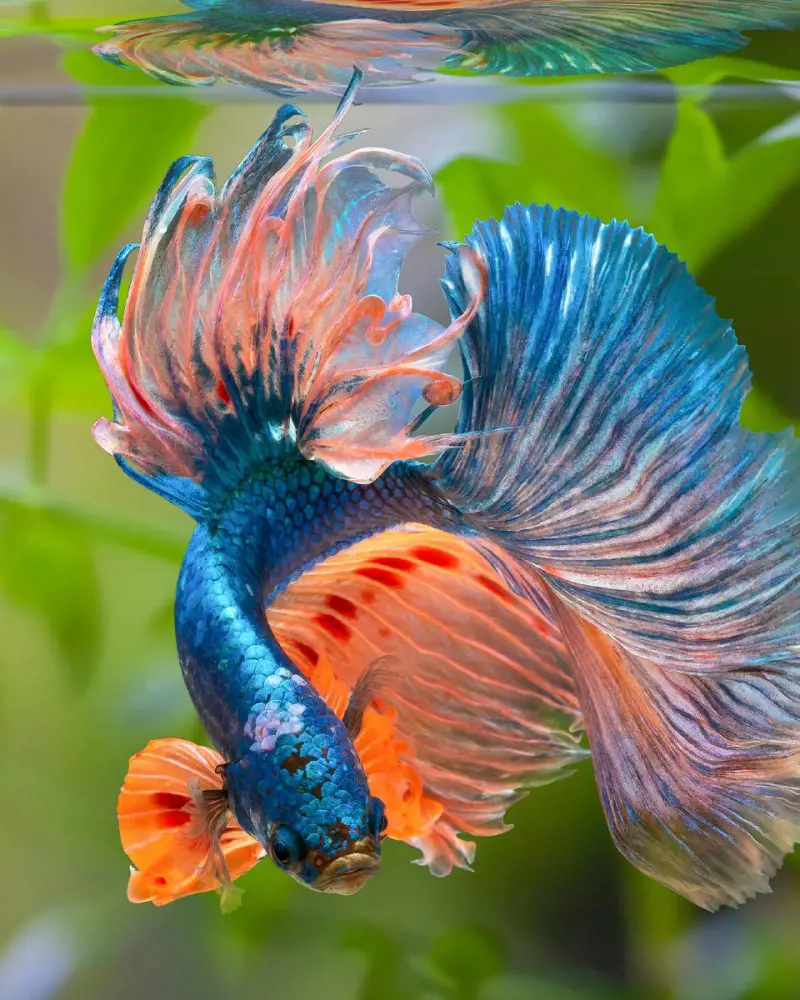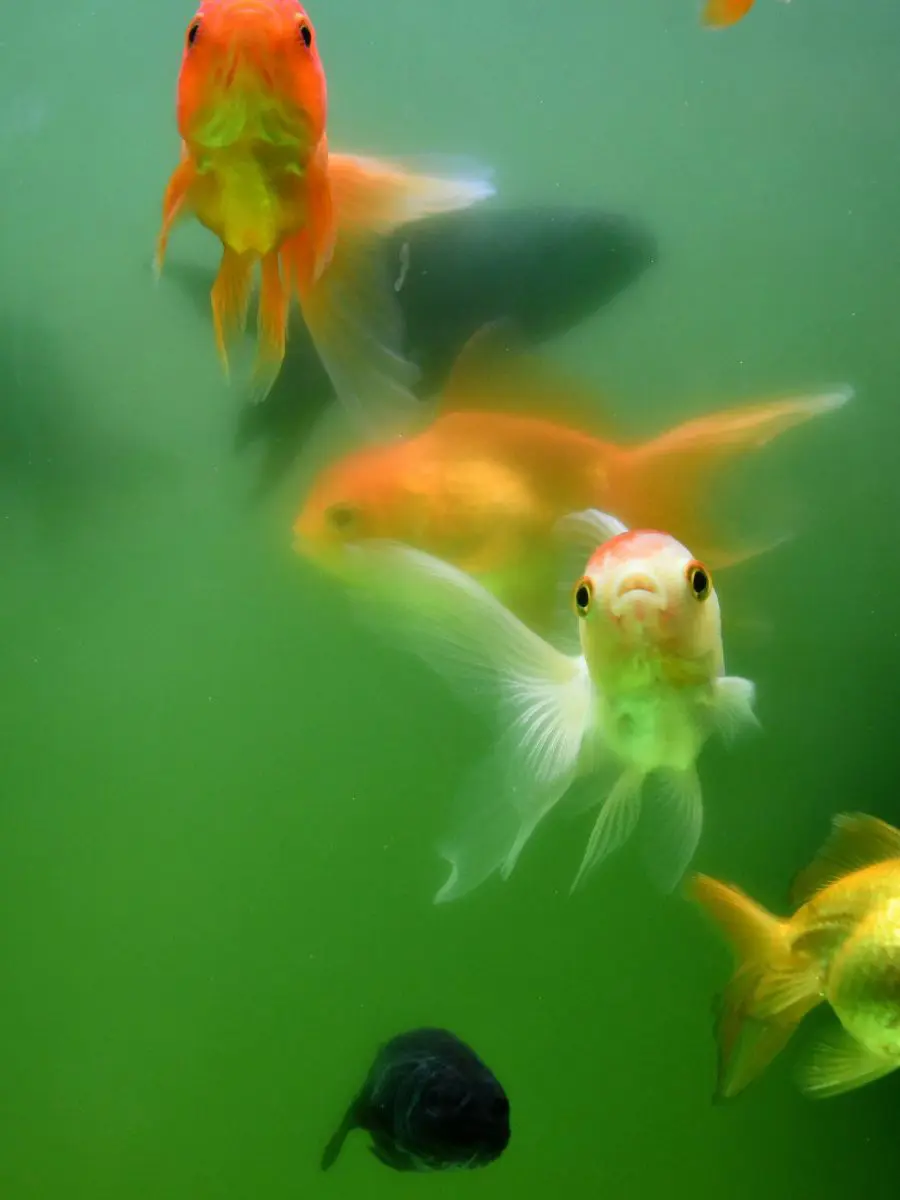Molly Fish Species Profile And Tank Mates
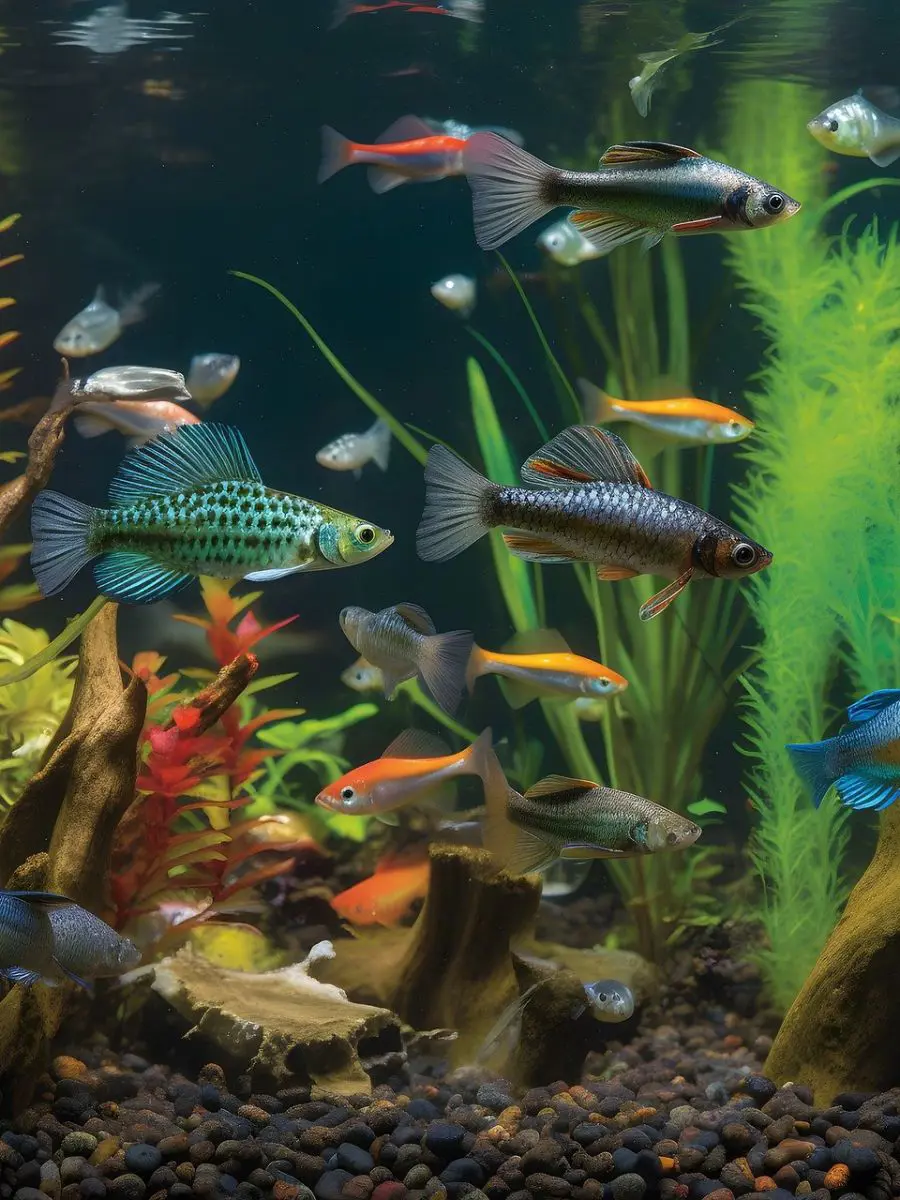
Molly fish is renowned for its vibrant colors and lively behavior. These fish have captivated aquarists with their diverse colors, ranging from shimmering silvers to deep blacks and bright oranges.
Growing up to 4 inches, Mollies thrive in a slightly alkaline environment, but their adaptability extends to brackish waters, reflecting their wild origins in both freshwater and coastal habitats. Their omnivorous diet includes algae, plant material, and small invertebrates, making them natural tank cleaners. Despite their peaceful nature, Mollies can be feisty, particularly males, who sometimes spar for dominance.
Characteristics Of Molly Fish
| Family | Poeciliidae |
| Origin | South and Central America, Mexico |
| Social | Peaceful |
| Tank Level | Mid-dweller |
| Minimum Tank Size | 20 gallons |
| Diet | Omnivores |
| Breeding | Live-bearer |
| Care | Easy |
| pH | 7.5 to 8.5 |
| Hardness | 15-30 dGH |
| Temperature | 78F |
Molly fish are characterized by their vibrant colors, adaptability, and lifebearing reproduction. These hardy fish, native to Central and South America, can be found in a wide range of environments, from freshwater rivers to brackish coastal waters.
Mollies exhibit a variety of colors, including black, silver, orange, and even spotted patterns, with some varieties like the Sailfin Molly featuring impressive, sail-like dorsal fins. Mollies are lifebearers, giving birth to fully formed fry, which adds an element of excitement for aquarists. They are generally peaceful, though males can display mild aggression, particularly during breeding.
Origin And Distribution Of Molly Fish
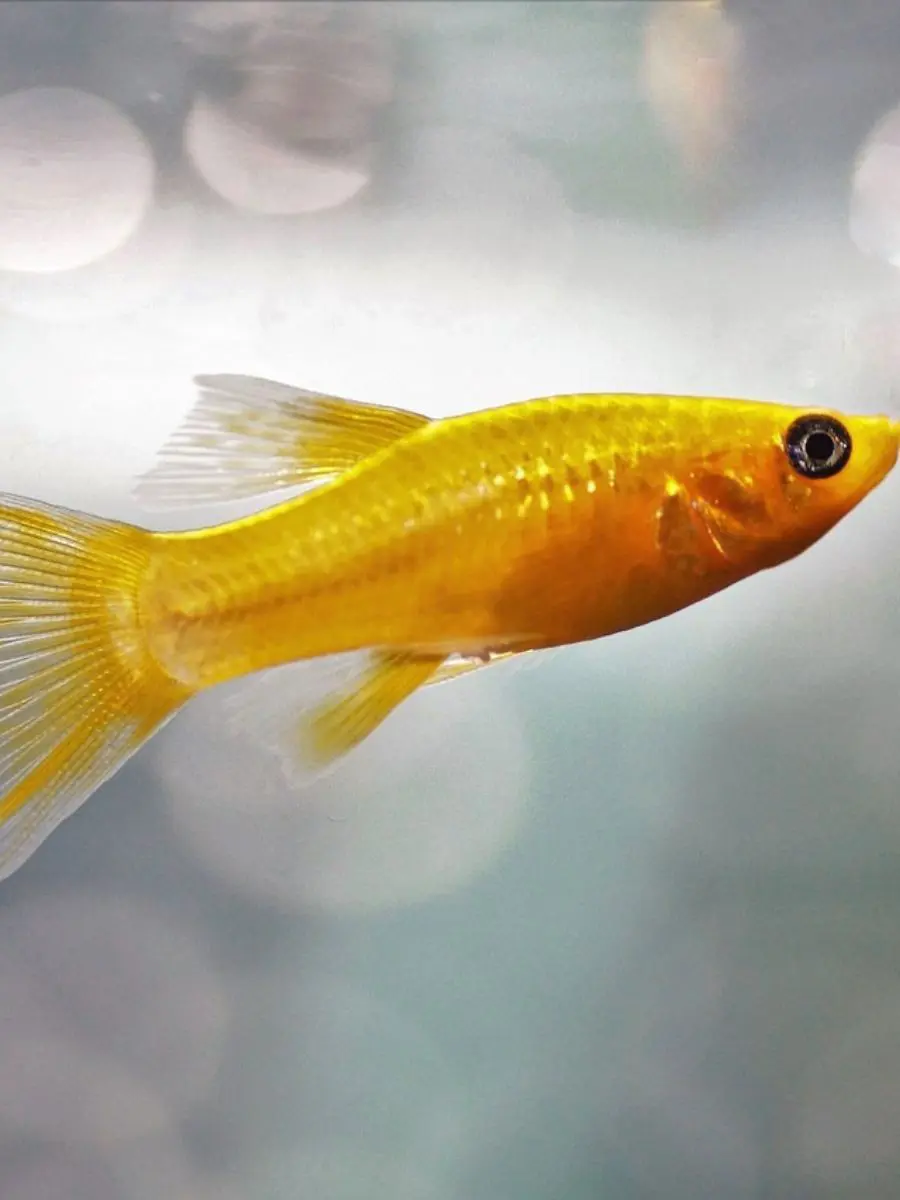
Molly fish originate from the warm, tropical regions of Central and South America. Their natural habitat spans from Mexico down through Central America, reaching as far south as Venezuela and Colombia.
The varied ecosystems of their origin contribute to Molly Fish's remarkable adaptability. Mollies are commonly found in slow-moving or still waters, often rich in vegetation. These habitats provide ample food sources, such as algae and small invertebrates, as well as plenty of cover to protect them from predators. The ability to thrive in both freshwater and brackish environments is a distinctive characteristic of Mollies, rooted in their evolutionary history in regions with fluctuating water salinity.
The natural distribution of Molly fish has been greatly expanded due to their popularity in the aquarium trade. While they were originally confined to the Americas, Mollies are now bred and kept in aquariums worldwide, making them one of the most recognized and widespread tropical fish species today.
Colors And Markings Of Molly Fish
Black Mollies are one of the most striking, with their velvety, deep black coloration that contrasts beautifully against green plants and colorful tank mates. Silver Mollies possess a shimmering, metallic sheen that reflects light, giving them a sleek, elegant appearance.
Dalmatian Mollies are another popular variety, known for their distinctive black spots on a white or silver body, resembling the coat of a Dalmatian dog. Gold Mollies and Golden Mollies boast a rich, golden-yellow color, often with a slight metallic tint, making them stand out in any tank. Marble Mollies combine patterns of black, white, and sometimes gold, creating a marbled effect that’s both dynamic and eye-catching. Lyretail Mollies often exhibit these color patterns, but with the addition of elongated, lyre-shaped tails, adding to their visual appeal.
In addition to solid colors, many Mollies display a variety of markings and patterns. The wide range of colors and markings in Molly's fish reflects both their natural genetic diversity and the efforts of breeders to create stunning, ornamental varieties.
- Speckled: Small, irregular spots scattered across the body, often seen in Dalmatian and Marble Mollies.
- Banded: Horizontal or vertical bands of color, which are more common in wild-type Mollies.
- Piebald: Patches of different colors, usually white and another color like black or gold.
- Iridescence: Some Mollies have an iridescent sheen that can make their scales shimmer with different colors under various lighting.
Diet And Feeding Of Molly Fish
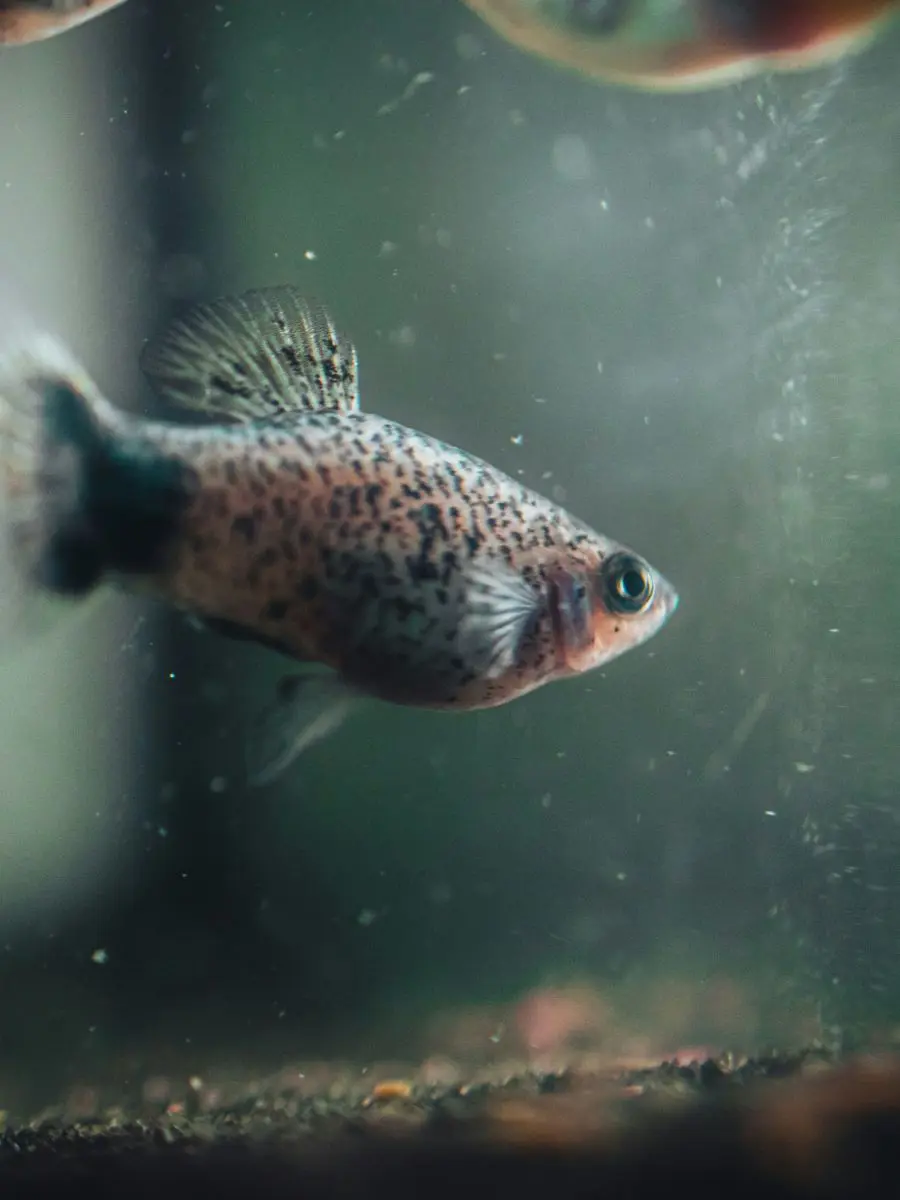
A well-balanced diet for mollies in captivity includes high-quality flake food, live or frozen foods, and plant-based materials. High-quality flake food is a staple in the diet of molly fish which provides a balanced mix of proteins, fats, and carbohydrates necessary for their growth and development.
To mimic their natural diet, mollies should be offered live or frozen foods such as brine shrimp, bloodworms, daphnia, and mosquito larvae. These protein-rich foods are particularly beneficial for breeding mollies, as they support the production of healthy fry. Plant-based foods are an essential part of a molly’s diet, as they help maintain a healthy digestive system. Blanched vegetables like spinach, zucchini, and peas can be offered a few times a week. Additionally, the inclusion of algae wafers or spirulina-based foods provides essential fiber and nutrients.
Feeding molly fish requires careful attention to portion control and frequency. Overfeeding can lead to obesity, poor water quality, and various health issues, including fatty liver disease. It is recommended to feed mollies small portions that they can consume within two to three minutes, two to three times a day. Uneaten food should be promptly removed from the aquarium to prevent water contamination.
Providing a varied and balanced diet is key to maintaining the health and vibrancy of molly fish in captivity. Proper feeding practices, including portion control and dietary adjustments based on the molly's life stage, further contribute to the well-being of these popular aquarium inhabitants.
Gender Differences
Molly fish exhibit several gender differences that can be observed in their physical characteristics, behavior, and reproductive roles. Understanding these differences is important for aquarists, especially those interested in breeding or maintaining a balanced aquarium environment.
Females are typically larger, reaching 4 to 6 inches, while males are smaller, about 3 to 4 inches long. The most notable difference is the anal fin. Males have a gonopodium, a narrow, rod-like fin used for mating, while females have a fan-shaped, rounded anal fin. Males also often have larger and more elongated dorsal fins. Males are usually more brightly colored to attract females, whereas females tend to have more subdued colors.
Males are more active and persistent in courting females, often chasing them and displaying their fins. Females are generally more passive and, once impregnated, can store sperm to give birth multiple times. Males can be more territorial and aggressive, especially when competing for mates, while females are typically less aggressive and more social. Males are involved in courtship and fertilization. Females carry fertilized eggs and give birth to living young, with a gestation period of around 28 days.
Care For Molly Fish
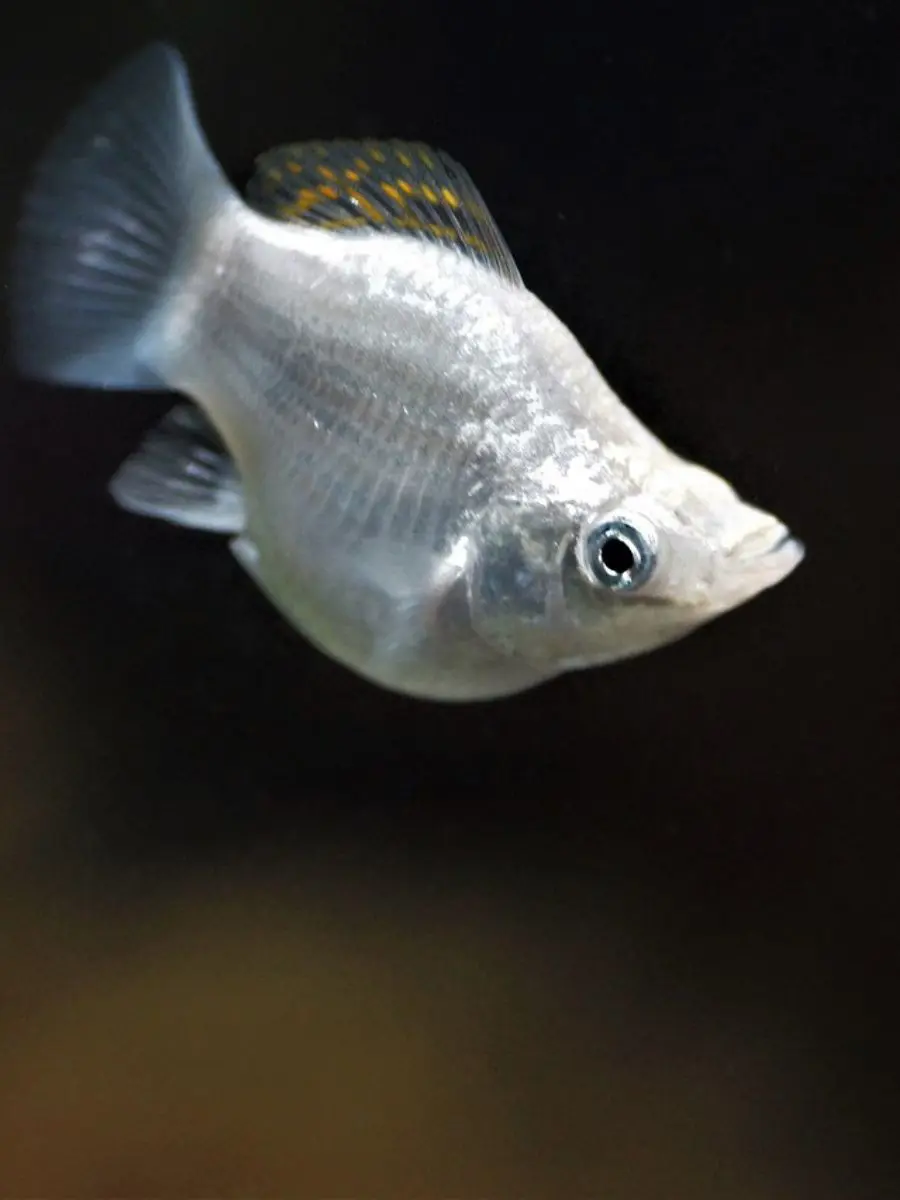
Caring for molly fish is relatively straightforward, making them ideal for both novices and experienced aquarists. These hardy, adaptable fish thrive in a variety of environments but do their best when their specific needs are met.
Tank Setup
Mollies are active swimmers and require ample space to thrive. A minimum tank size of 20 gallons is recommended for a small group, but larger tanks (30 gallons or more) are preferable to accommodate their active nature and potential growth. A sandy or fine gravel substrate mimics their natural habitat and is gentle on their bodies. Includes live plants like java fern, hornwort, and water sprite, which not only provide shelter but also help maintain water quality by absorbing nitrates. A good filtration system is essential to keep the water clean and well-oxygenated. Mollies are sensitive to poor water quality, so a filter that provides mechanical, biological, and chemical filtration is ideal.
Water Condition
Mollies are tropical fish and prefer water temperatures between 75°F and 82°F. A reliable aquarium heater is necessary to maintain a stable temperature, especially in cooler climates. Mollies thrive in slightly alkaline water with a pH of 7.5 to 8.5. They also prefer hard water with a general hardness (GH) of 10 to 25 dGH. If your tap water is soft, you may need to add mineral supplements or use a crushed coral substrate to increase hardness. Regular water changes are crucial to maintaining water quality. Perform weekly water changes of 25-30% to remove waste and toxins.
Social Behavior
Molly fish are known for their generally peaceful and social behavior, making them a popular choice for community aquariums. Understanding their social behavior helps in creating a harmonious and stress-free environment for these vibrant fish. Mollies are social fish that thrive in groups. Within a group of mollies, a loose hierarchy often forms, particularly among males. Dominant males may establish territories or display dominance by chasing other males or even females. Overcrowding, poor water quality, and a skewed male-to-female ratio can increase stress and lead to heightened aggression.
Common Health Issues In Mollies
Health management is a crucial aspect of caring for mollyfish to ensure they remain vibrant and active. Mollies are generally hardy fish, but they can be susceptible to various health issues, often triggered by stress, poor water quality, or inadequate nutrition.
Ich
Ich is one of the most common diseases in mollies, caused by the parasite Ichthyophthirius multifiliis. It manifests as small white spots on the fish's body, gills, and fins. Infected fish may scratch against surfaces, exhibit rapid breathing, and become lethargic. Ich is often triggered by sudden changes in water temperature or poor water quality. Raise the water temperature gradually to 82-86°F (28-30°C) and add an ich treatment medication according to the package instructions. Maintain excellent water quality and reduce stressors during treatment.
Fin Rot
Fin rot is a bacterial or fungal infection that causes the fins to become ragged and discolored. It often occurs in fish that are stressed or living in poor water conditions. Left untreated, fin rot can lead to more severe infections and tissue damage. Fin rot is a bacterial or fungal infection that causes the fins to become ragged and discolored. It often occurs in fish that are stressed or living in poor water conditions. Left untreated, fin rot can lead to more severe infections and tissue damage.
Fungal Infection
Fungal infections appear to cause white, cotton-like growths in the skin, fins, or gills. These infections often occur after physical injury or when the fish's immune system is compromised by poor water quality or stress. Isolate infected fish in a quarantine tank and treat them with antifungal medications. Maintain pristine water conditions to support the fish's immune system and prevent further infections.
Tank Mates Of Molly Fish
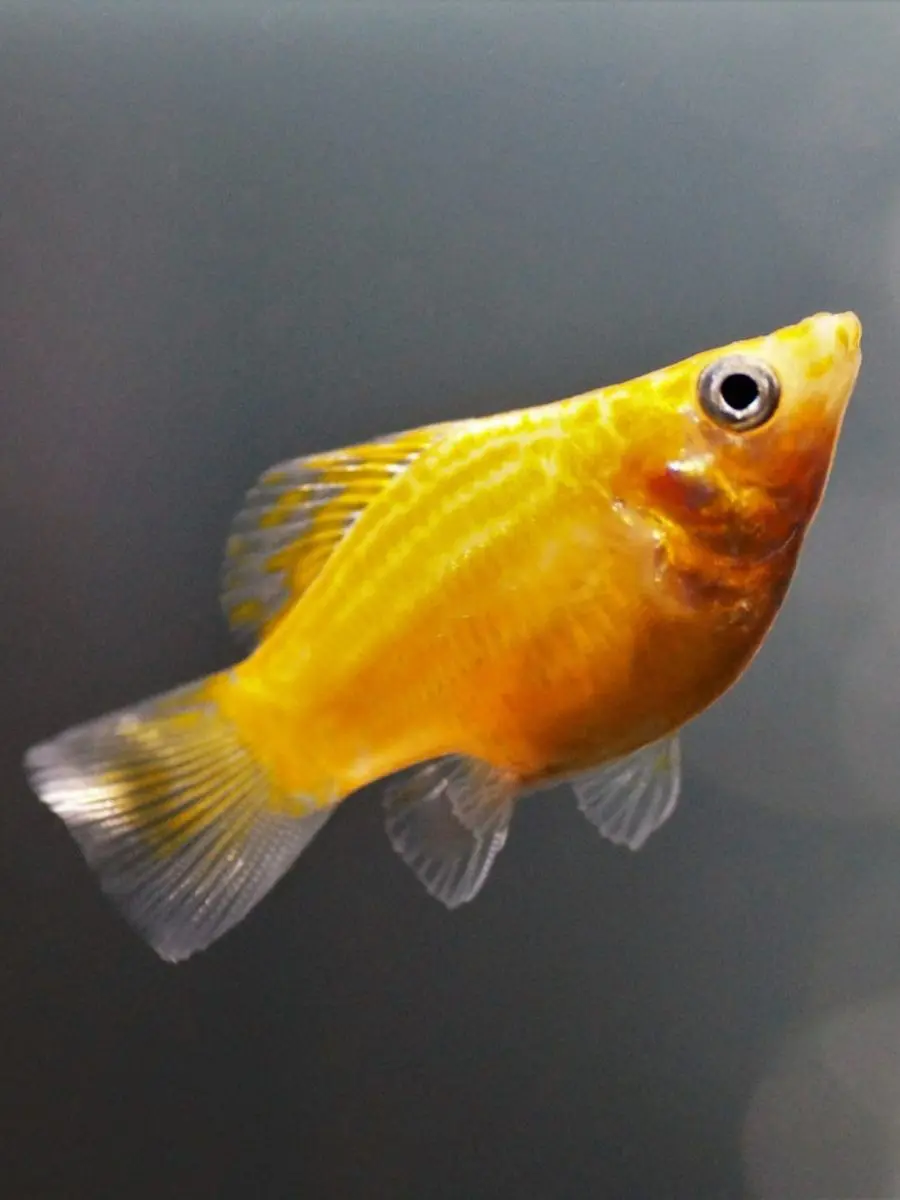
Molly fish are generally peaceful and sociable, making them great candidates for community tanks. However, choosing the right tank mates is important to ensure a harmonious environment, as some fish species may not be compatible with mollies due to differences in behavior, water preferences, or temperament.
Guppy Fish
Guppies are small, colorful, and peaceful fish that thrive in similar water conditions as mollies. They are active swimmers and get along well with mollies, making them a great addition to a community tank. Guppies are active swimmers and enjoy being in groups, which complements the social nature of mollies. Their vibrant colors and dynamic swimming patterns add visual interest to the tank.
Endlers
Endler's livebearers, often simply called Endlers, are a small, vibrant, and peaceful species closely related to guppies. They are a great choice as tank mates for mollies due to their similar care requirements and temperament. Endlers are slightly smaller than guppies, typically reaching about 1 to 1.5 inches in length. Endlers and Mollies make excellent tank mates due to their similar size, peaceful nature, and comparable care requirements. The combination of these two species in a tank creates a colorful, dynamic environment where both can thrive.
Swordtails
Swordtails and mollies are well-suited to share a tank due to their similar size, dietary needs, and water preferences. Both species are livebearers and have compatible temperaments, making them ideal companions in a community setup. However, because swordtails are slightly larger and males can sometimes be territorial, it’s essential to provide a spacious tank with plenty of swimming room and hiding spots. Swordtails are a great addition to a community tank with mollies, offering both beauty and compatibility.
Neon Tetras
Neon tetras and mollies generally get along well due to their peaceful temperaments and similar water preferences. Neon tetras are an excellent choice for a community tank with mollies, thanks to their vibrant coloration, peaceful nature, and compatibility with similar water conditions. Their small size and schooling behavior enhance the visual appeal of the aquarium while maintaining a harmonious environment.
Panda Corydoras
Panda Corydoras are a charming and peaceful species of catfish that make excellent tank mates for mollies. They are an excellent addition to a community tank with mollies, due to their peaceful nature, attractive appearance, and compatibility with similar water conditions. Their bottom-dwelling behavior complements the active swimming of mollies, and their gentle temperament ensures a harmonious tank environment.
Top Lists

